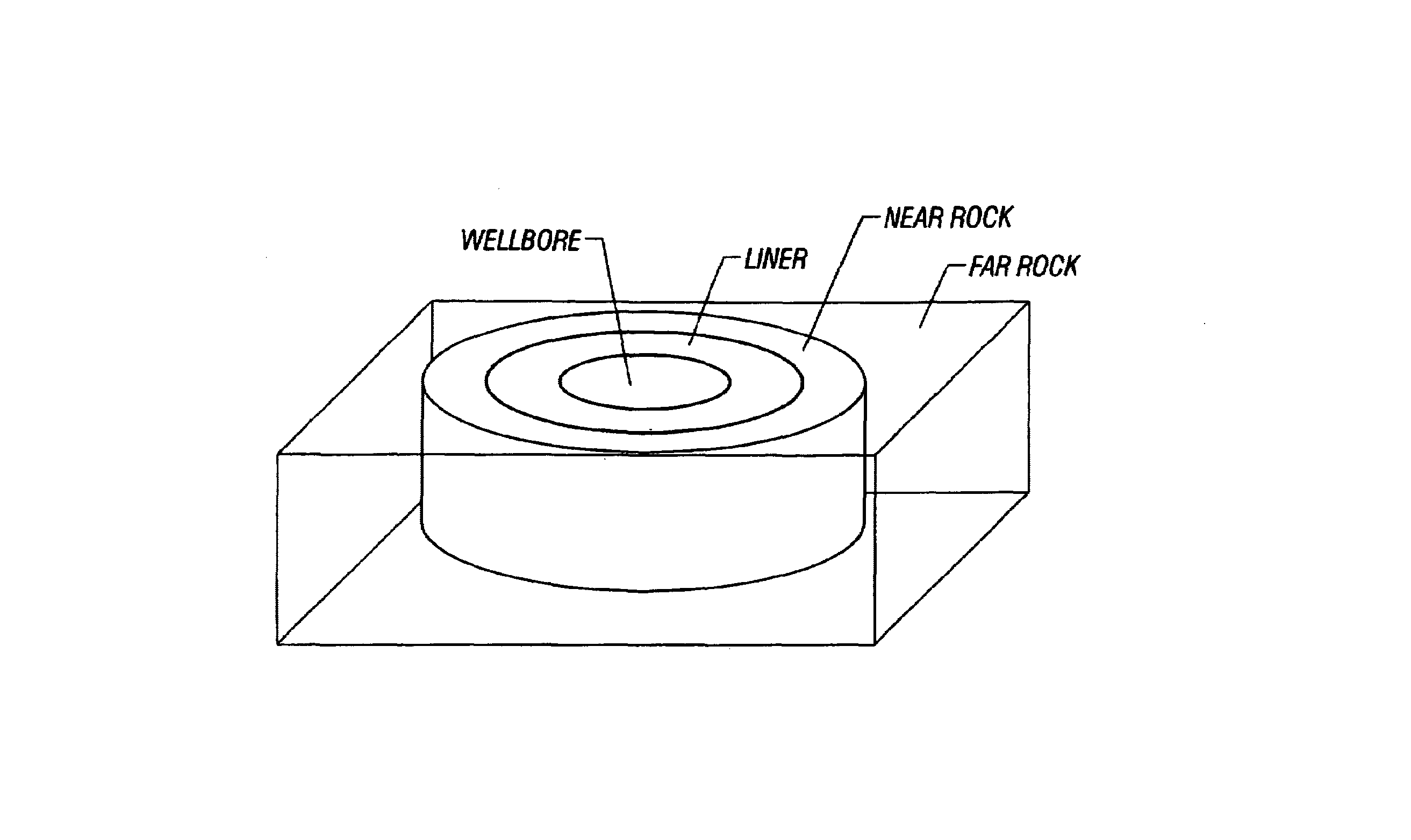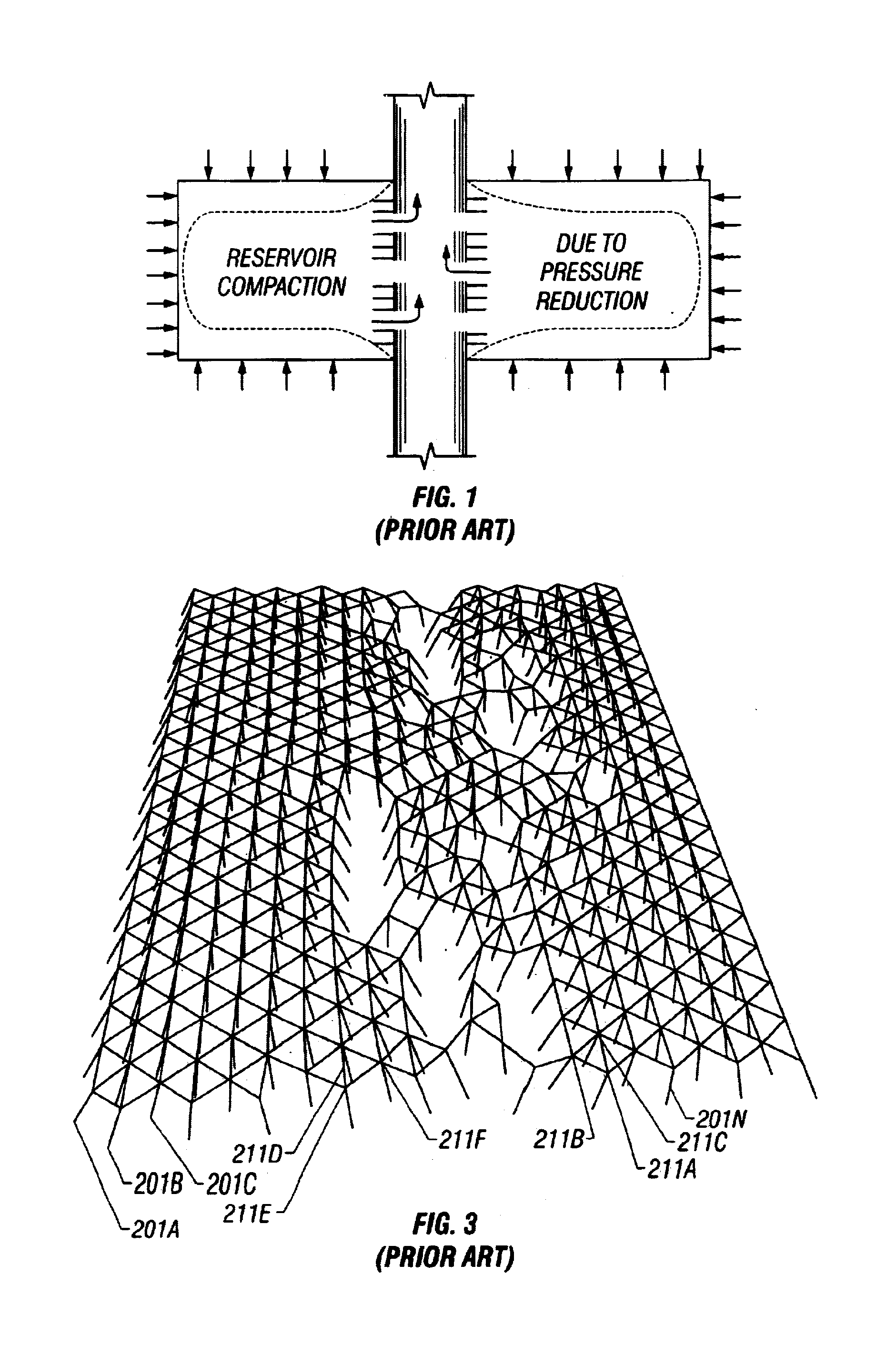Method of load and failure prediction of downhole liners and wellbores
a technology of failure prediction and downhole liners, which is applied in the direction of survey, instruments, borehole/well accessories, etc., can solve the problems of reducing the formation fluid pressure, affecting the formation strength and strength distribution analysis of most oil companies, and sand production from the formation and plugging of the borehole, so as to reduce the formation fluid pressure
- Summary
- Abstract
- Description
- Claims
- Application Information
AI Technical Summary
Benefits of technology
Problems solved by technology
Method used
Image
Examples
Embodiment Construction
[0025]The present invention uses a Dynamic Range Relaxation Algorithm (DRRA) for the modeling of borehole failure. U.S. patent application Ser. Nos. 09 / 542,307 (the '307 application) filed on Apr. 4, 2000, now U.S. Pat. 6,370,491, and application Ser. No. 09 / 949,966 (the '966 application) filed on Sep. 10, 2001, now U.S. Pat.No. 7,043,410, disclose a method of using a DRRA for the modeling of deformation and fracturing of earth formations on a geologic scale. The present invention uses many of the concepts from the '307 and the '966 application.
[0026]Turning now to FIG. 2, a flow chart of the major steps of using a DRRA are shown. The first step in the invention isto select a mode of definition of the subsurface 101. This step defines the boundaries of the model and the nodal configuration therein. The mode of definition may be aerial, cross-sectional or 3-D. Within the model, a plurality of interconnected nodes that characterize the geometry of the model are defined. In a preferred...
PUM
 Login to View More
Login to View More Abstract
Description
Claims
Application Information
 Login to View More
Login to View More - R&D
- Intellectual Property
- Life Sciences
- Materials
- Tech Scout
- Unparalleled Data Quality
- Higher Quality Content
- 60% Fewer Hallucinations
Browse by: Latest US Patents, China's latest patents, Technical Efficacy Thesaurus, Application Domain, Technology Topic, Popular Technical Reports.
© 2025 PatSnap. All rights reserved.Legal|Privacy policy|Modern Slavery Act Transparency Statement|Sitemap|About US| Contact US: help@patsnap.com



